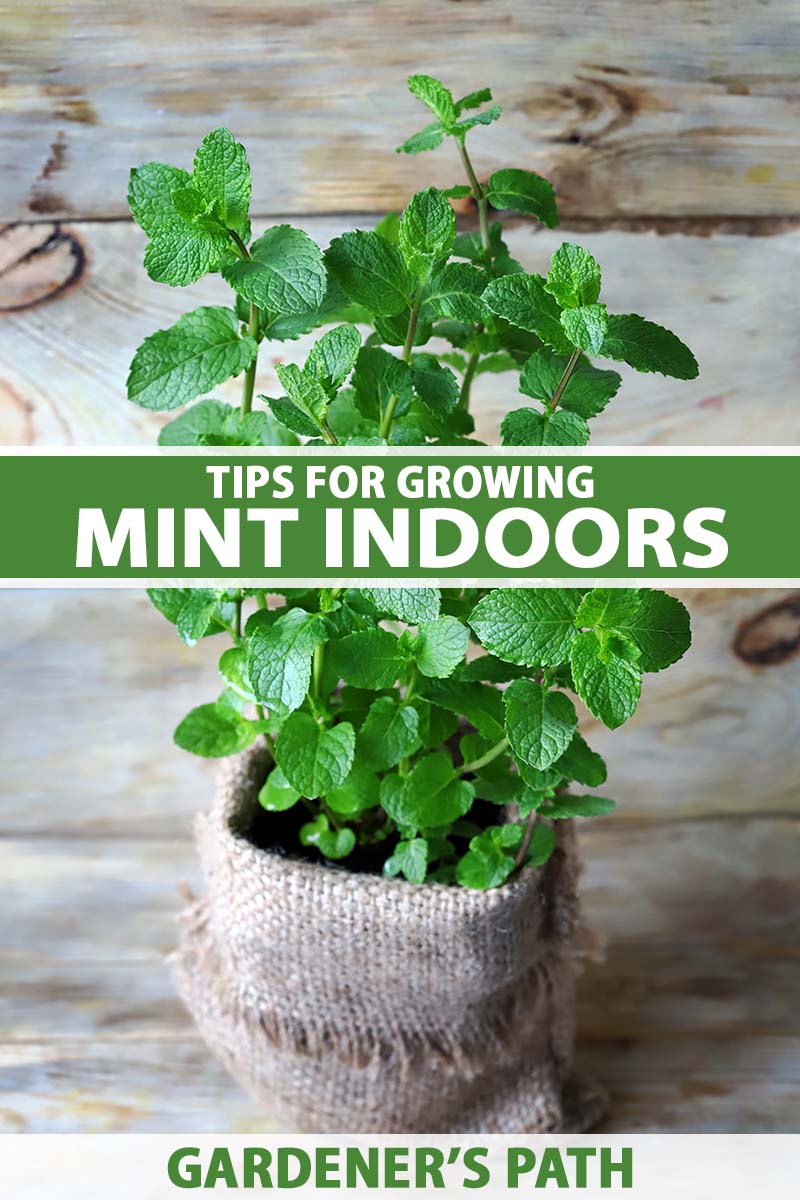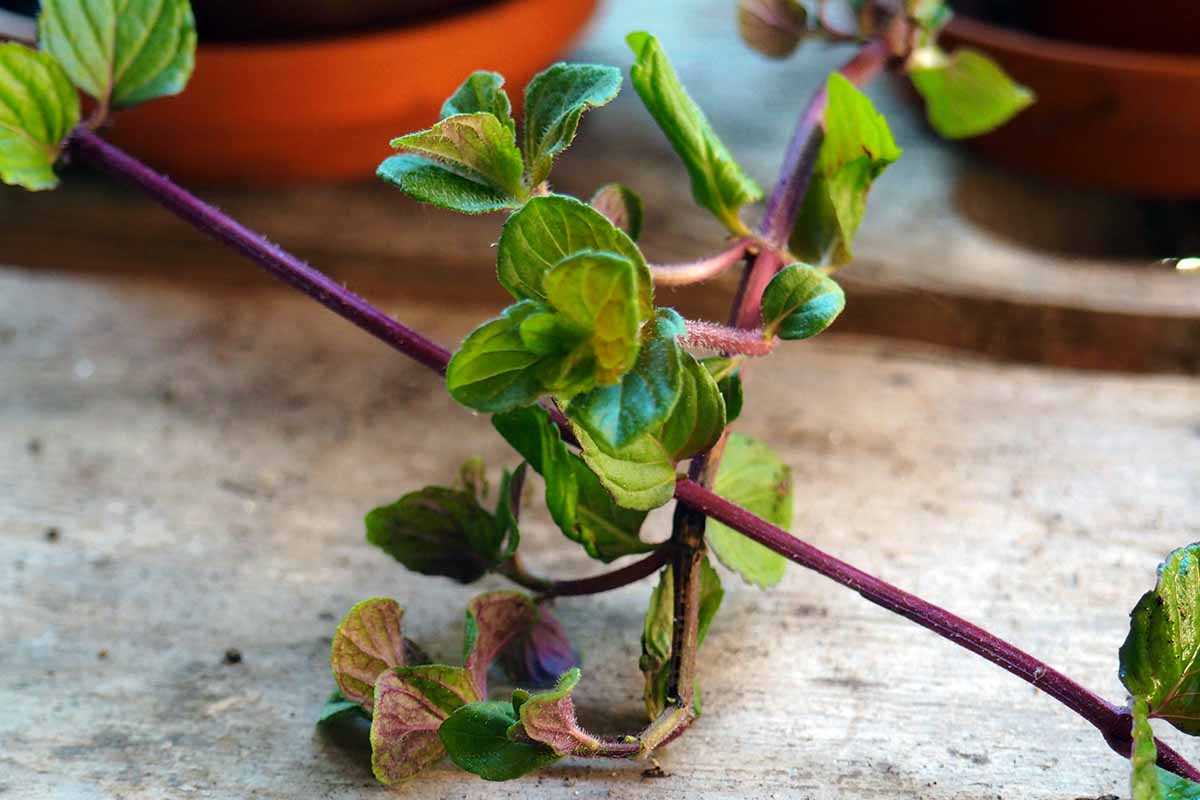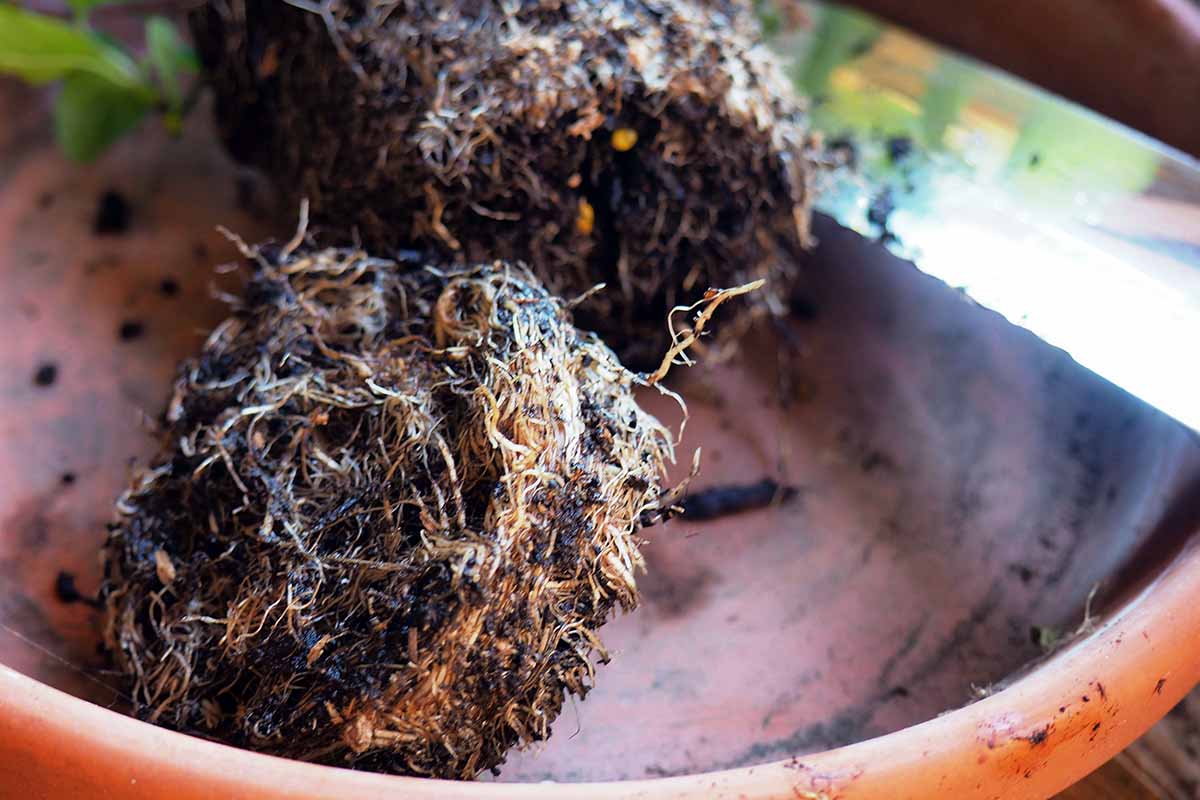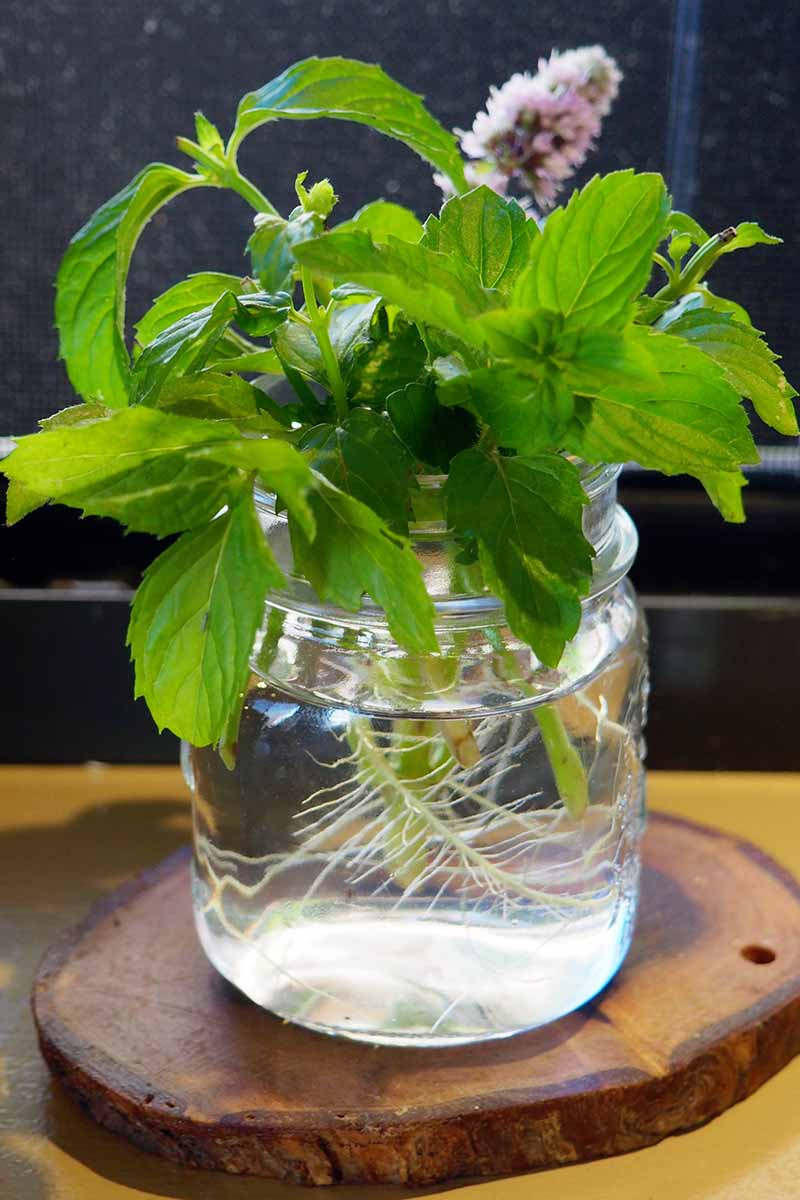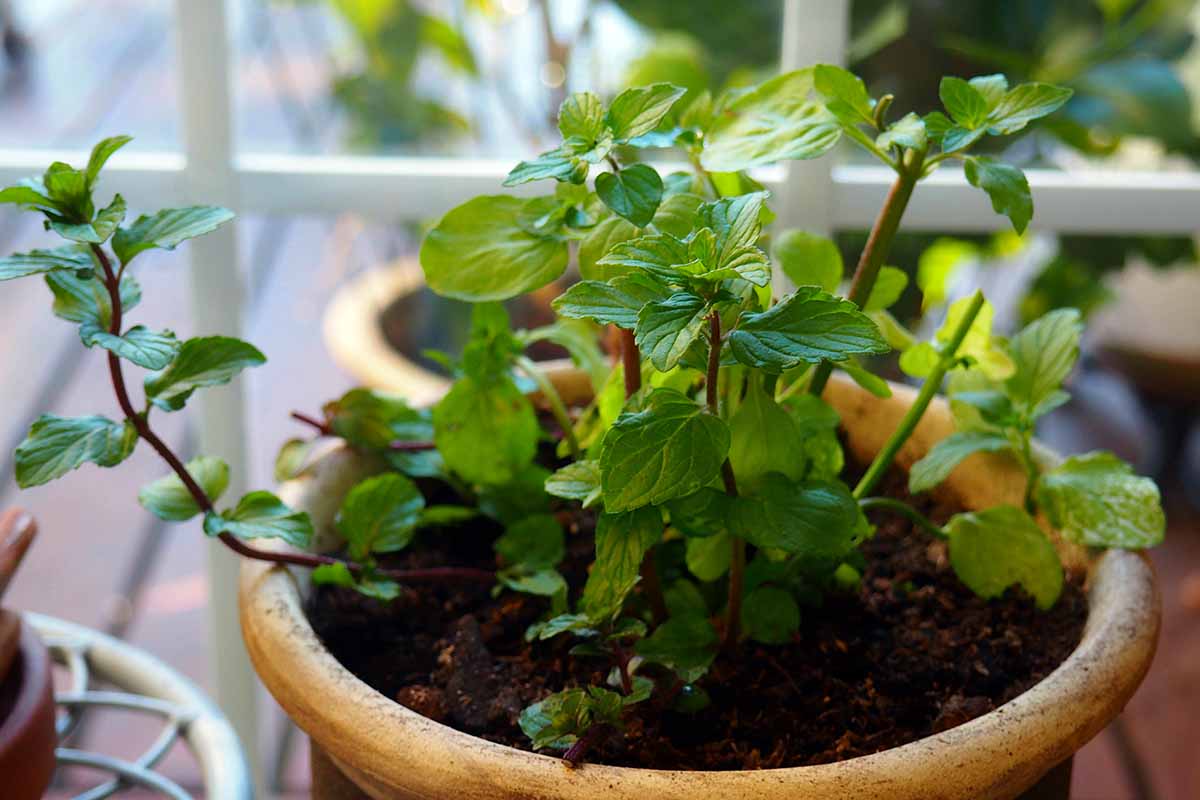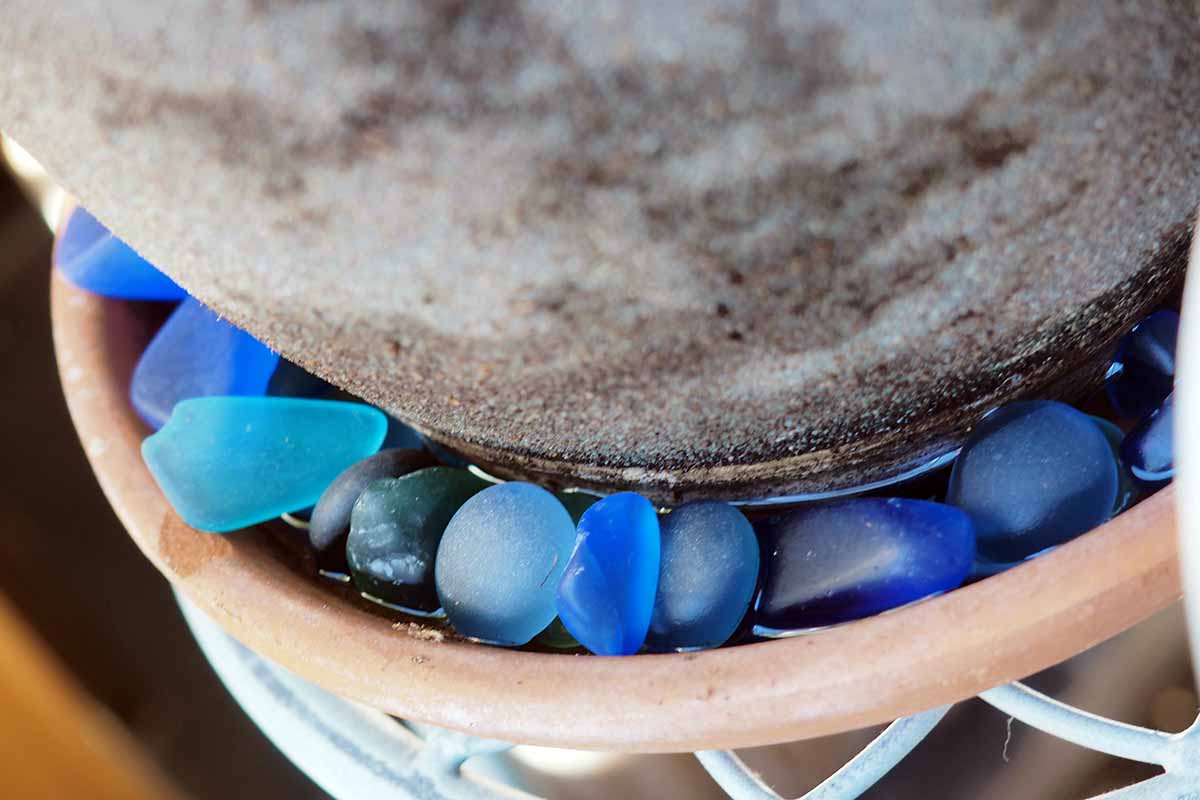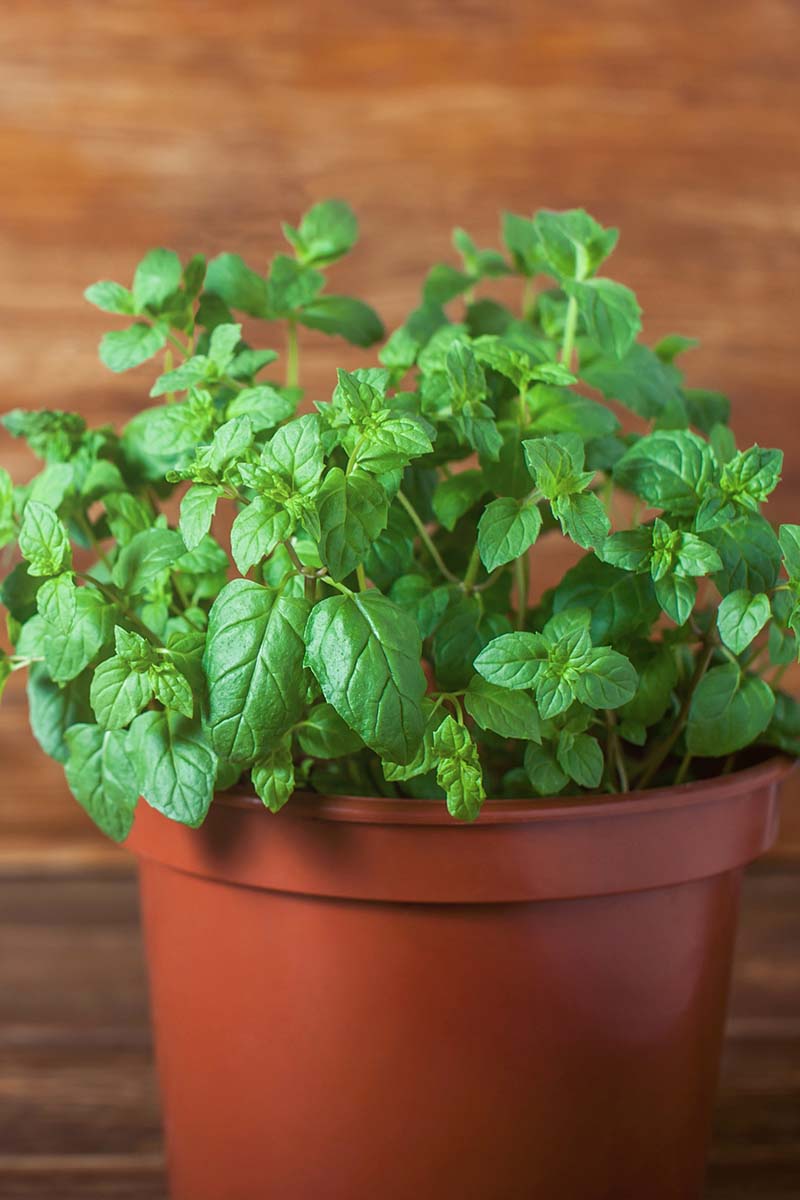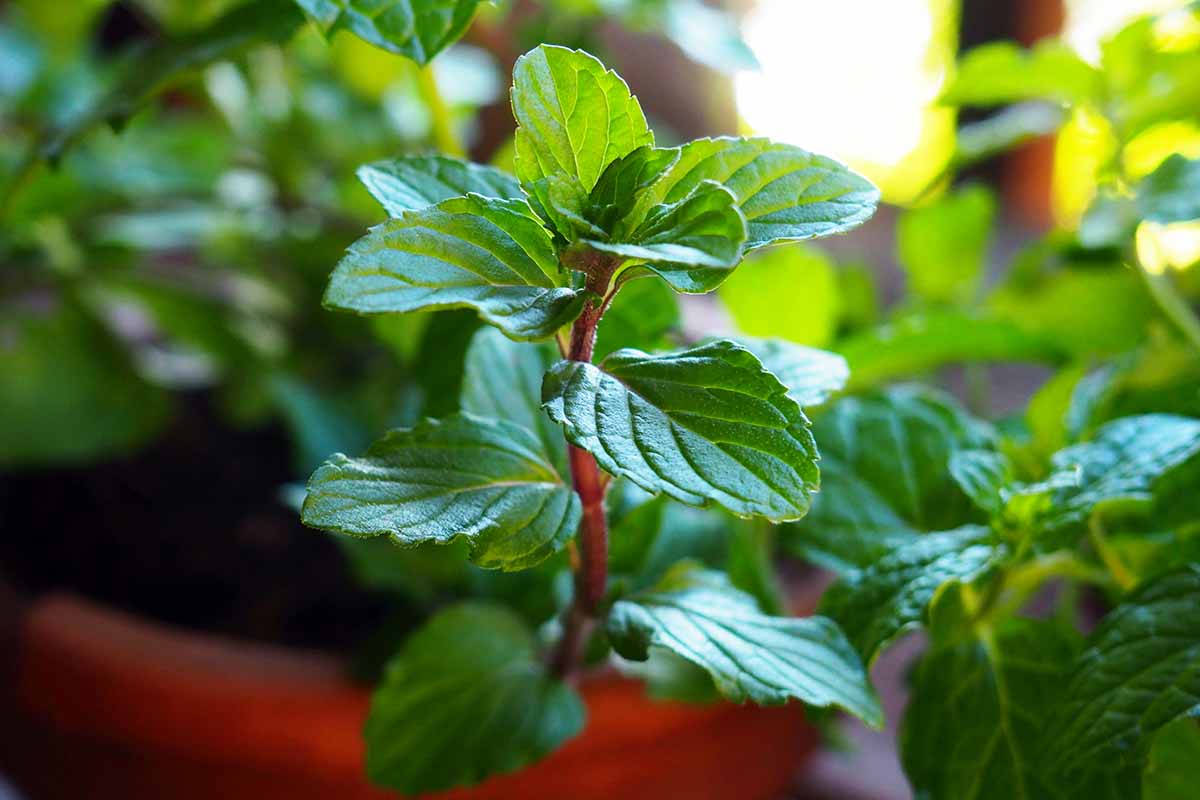Aromatic and flavorful, mint is a delightfully rewarding herb that’s easily cultivated in the garden. And it grows nicely indoors as well, providing mint lovers everywhere with much joy over winter! We link to vendors to help you find relevant products. If you buy from one of our links, we may earn a commission. And is there anything better for chasing the blues or calming the mind than gently rubbing a few leaves and inhaling deeply, to benefit from the uplifting essential oils? Unfortunately, with the onset of cold weather and short days, these herbaceous perennials lose their leaves and die back over winter. However, they don’t require cold vernalization and many species stay evergreen for folks with warm winter climates. But for those of us in temperate regions, having a productive plant or two growing indoors is a smart and simple solution to winter’s lack. Are you with me? You can enjoy a steady supply of leaves over winter with just a few simple steps. Join us now for a look at how to grow mint indoors. Here’s everything we’ll cover up ahead:
Indoor Growing Basics
Garden mints belong to the genus Mentha, which includes species that are native to Africa, Asia, Australia, Europe, and North America. Fast-growing perennial herbs with an upright growth habit, they produce pretty spires of flowers ranging in color from purple to white that bloom in late summer. They spread mainly by runners and underground creeping rhizomes – and container growth is an easy way to keep their enthusiastic spread in check. Plants typically grow 12 to 36 inches tall and spread 18 to 42 inches, although the Corsican variety, M. requienii, is a ground-hugger at only four inches tall. Their natural habitat is largely beside waterways like creeks and ponds, at marsh edges, and in moist meadows and forest fringes. In the garden, they prefer moist soil with a neutral pH of 6.0 to 7.0 in a well-draining site, but can’t abide soggy or waterlogged conditions. Mint enjoys a full to part sun exposure with a little shady relief from intense afternoon sunlight. Light feeders, they benefit from an application of all-purpose fertilizer such as 10-10-10 NPK in early spring and once more at midseason. But feeding requirements for indoor plants are a bit different – more on that in a bit. These are vigorous growers, and regularly pinching the stems – not just the leaves – promotes branching for full, bushy plants.
Propagation Tips
Indoors, mint can be grown in containers from stem cuttings or root divisions, and even hydroponically in a glass of water for soilless cultivation. Let’s look at the requirements for each type of propagation for indoor plants.
From Root Divisions
To create root divisions, begin with a mature plant in late summer. Fully insert a clean, sharp spade all the way around the drip line. Lift the plant, keeping the root ball intact. To make divisions from potted specimens, invert the pot and gently remove the root ball. Remove any bits of drainage material wrapped in the lower roots, if you’ve added any to the container. Use the spade or a clean, sharp knife or hori hori to cut the root ball into quarters, ensuring each section has stems and roots intact. From the outer edges and bottom, trim away up to one-third of the root ball mass, including roots, soil, and stems. Trim stems to four to six inches tall, using clean, sharp scissors. Prepare smallish containers, four to eight inches across, for indoor use. I like to add a layer of drainage material on the bottom, such as pebbles or broken pottery. Add a couple inches of a humus-rich potting soil mix to each container. Set each root division in place then add more potting soil to just above the division’s soil line, leaving an inch or two of headspace from the pot’s lip. Carefully firm the soil in place and place containers on a saucer. Water gently but deeply to hydrate all of the roots, and keep the soil moist but not wet. Set plants outdoors in a spot with morning sun and light afternoon shade for four to six weeks to recover from division shock. When overnight temperatures dip below 60°F, bring your new mint plants indoors.
From Stem Cuttings
To propagate mint from stem cuttings, use clean, sharp scissors to take four- to six-inch tip cuttings from healthy, mature plants in mid- to late August. Remove the bottom leaves and dip the cut ends in rooting hormone, gently shaking off the excess. Insert stems into prepared four- or six-inch pots filled with a humus-rich potting mix. Water gently and keep the soil moist but not wet. Set containers into a sheltered spot with dappled sunlight or morning sun only. Allow cuttings to root for six to eight weeks before bringing the new plants indoors, or when overnight temperatures drop below 60°F.
Stem Cuttings in Water
For soilless growth, take four- to six-inch stem cuttings from healthy plants in late summer. Remove the bottom leaves and place in a small glass or jar filled with tepid water, ensuring no leaves are below the water line, only the stems. Set in a sunny windowsill that receives four to six hours of light per day. Roots form quickly and should have their water changed every other day to prevent bacterial or fungal growth. Once roots are longer than one inch, add a few drops of an all-purpose liquid fertilizer such as 10-10-10 NPK to the water to boost new growth. Add the fertilizer right after changing the water. Continue to feed stem cuttings a few drops every two weeks, but go lightly – adding too much fertilizer can weaken the flavor of the mint. Stop providing fertilizer in mid-winter when the lengthening days start to promote new growth.
How to Grow
Use the following general guidelines to get the most from your indoor plants.
Light, Location, and Temperature
For healthy plants that thrive indoors, keep your mint in a cool room with bright, indirect light and out of cool breezes for four to six hours per day. A south- or west-facing window is ideal for winter, provided plants don’t receive hot afternoon light and they’re not close to heating elements. If you don’t have adequate natural lighting, a grow light may be needed to keep plants vibrant. Read about those in our guide to 13 of the best grow lights for indoor gardens. Indoor plants do best in cooler temperatures of 65 to 70°F during the day and 55 to 60°F overnight. Also, it’s helpful to rotate plants to provide light exposure and maintain an even appearance. Turn plants a quarter rotation, or 90 degrees, once every week to compensate for stems bending toward the light.
Food, Humidity, and Water
Mints prefer slightly moist soil as a rule. But in winter, you should allow the top inch of soil to dry between waterings. Plants will also enjoy indoor humidity of about 45 percent. In dry conditions, such as when heat is running in the wintertime, mist plants lightly between watering or place containers on a water-filled saucer of small pebbles. Feed rooted plants lightly when they’re brought indoors using a half-strength solution of a 10-10-10 NPK all-purpose liquid fertilizer. Feed containers at half-strength every three to four weeks, but don’t overfertilize, which can cause herbs to lose their flavor and may lead to a buildup of minerals in pots.
How to Harvest
Harvest indoor mint by trimming the stems regularly to encourage branching, promote new growth, and keep plants bushy. Avoid plucking only the leaves if possible– regrowth is slower and less productive this way than it is if you pick by severing the stems. Use a clean, sharp knife or small kitchen scissors to cut back stems on a regular basis, trimming one or two stems every two to three weeks. Once stems are four to eight inches tall, cut them all back by half, severing just above a set of leaves – new stems emerge from nodes at these junctures. Don’t cut stems back shorter than two inches in length. Use what you’ve picked in the kitchen and store any surplus in the refrigerator in an airtight container. Growth slows as day length gets shorter, so a lull in leaf production can occur as fall turns to winter. But this can be avoided by bringing two pots indoors. For a steady supply of leaves, harvest by cutting stems from one pot only throughout autumn, then switch to the second pot once winter starts. The second pot will provide plenty of fresh leaves while the first one recovers and produces new growth. Another alternative is to add a grow light in November to counteract the shorter daylight hours of winter. Without adequate light or an extra supply, you may find there isn’t enough new growth to harvest. Give them bright, indirect light, keep the soil just slightly moist, and fertilize lightly for healthy plants that produce a steady supply of refreshing leaves. What’s your favorite variety for growing mint indoors? Let us know in the comments below. And for more info on growing mint, add these articles to your reading list next:
Tips for Growing Apple MintTips for Growing Mint from SeedHow to Grow and Care for Spearmint Plants
